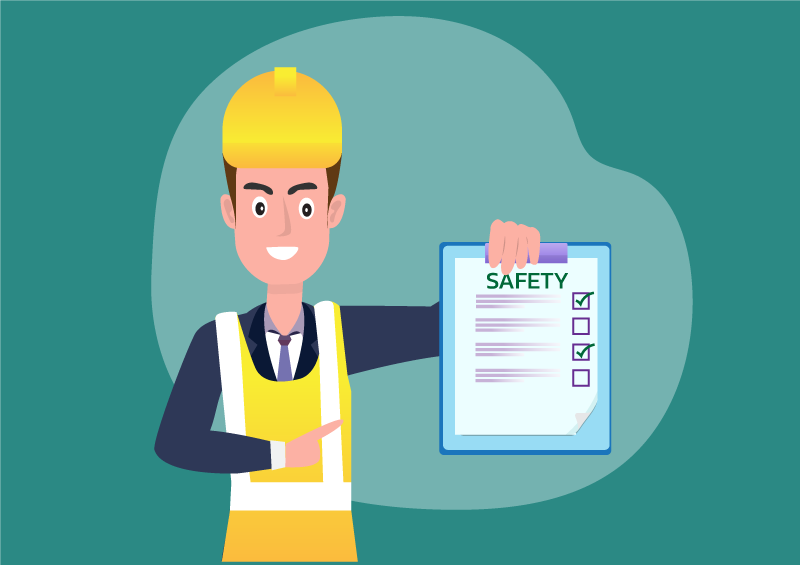Improvement Notices
Under the Work Health and Safety Act 2011 (NSW), safety inspectors have a number of powerful tools at their disposal to ensure that employers, workers, and other persons comply with their work health and safety obligations.
A commonly used tool is an “improvement notice”, which is issued to an employer if a safety inspector has a reasonable belief that the employer is contravening or has contravened work health and safety legislation and is likely to do so again.
An improvement notice requires the employer to remedy the contravention or prevent a likely contravention from occurring again, and must include:
- the legislative provision that the safety inspector reasonably believes is being or has been contravened;
- how that contravention occurred or is occurring; and
- a timeframe within which the employer must remedy the contravention or prevent it from reoccurring.
The primary objective of an improvement notice is to ensure the recipient addresses and remedies identified health and safety risks in a timely manner.
Prohibition Notices
However, if a safety inspector reasonably believes that a work activity will or may pose a more serious risk to health and safety, they may issue a “prohibition notice” to an employer and other persons involved in the activity. A prohibition notice directs a person who has control over a hazardous activity to cease undertaking that activity, or to carry it out in an alternative manner, until the safety inspector is satisfied that the factors giving rise to the health and safety risks have been eliminated or remedied.
A prohibition notice may be given orally but must be confirmed in writing as soon as practicable. It must include similar information to an improvement notice, in addition to specific directions about which activities are prohibited or must be undertaken in an alternative manner. For example, the notice may compel an employer to prevent employees and others from using scaffolding that is not properly constructed, or to prohibit persons from entering an area where an environmental hazard is present until that hazard has been removed or controlled.
Compliance
Compliance with improvement and prohibition notices require employers to carefully review the terms of the relevant notice, whilst ensuring adherence to specified timeframes. For example, an improvement notice may require an employer to provide training to its employees in relation to safe manual handling processes within seven days.
Failing to comply with an improvement notice or compliance notice can be costly, with the following penalties applying:
- for non-compliance with improvement notices, up to $61,795.25 for individuals and up to $310,050.95 for body corporates; and
- for non-compliance with prohibition notices, up to $124,127.85 for individuals and up to $620,101.90 for body corporates.
Given the significant penalties which may apply, it is critical that employers ensure that they understand their compliance obligations arising from any issued notices, and seek immediate clarification from the safety inspector in the event of any ambiguities.
Appealing Improvement and Prohibition Notices
There are a number of reasons why an employer may decide to appeal against the issuing of an improvement or prohibition notice, including where:
- there are ambiguities or deficiencies within the notice (i.e. insufficient information provided about the alleged health and safety risk and/or alleged legislative provision breached), which render compliance impossible and could result in significant penalties for non-compliance;
- the directions for improvement given are unnecessarily costly or disruptive to the employer’s operations, particularly when reasonable alternatives exist; or
- the existence of the notice may give rise to related liabilities or consequences (i.e. insurance coverage, ability to submit tenders for government and private sector work etc).
If an employer intends to request an “internal review” of an improvement or prohibition notice, an application to do so must be made within 14 days of receiving the relevant notice (though this deadline may be extended under certain circumstances). An internal review involves a SafeWork employee, who was not substantially involved with issuing the improvement or prohibition notice, reviewing the relevant notice and any information submitted in the review application. The review officer may confirm, vary or set aside the decision to issue improvement or prohibition notice and substitute that decision for one which they consider appropriate.
Alternatively or in addition to an internal review, an employer may apply for an “external review” with the Industrial Relations Commission within 14 days of the relevant notice or internal review decision being issued. The Commission may decide to confirm, vary or revoke the relevant notice or internal review decision issued.
How We Can Help
It is important for employers to understand and comply with improvement or prohibition notices, and to obtain legal advice where necessary. If there are any ambiguities or missing information in the improvement or prohibition notices, an employer’s capacity to comply will be affected which may give rise to significant penalties.
Questions/Assistance
If you have any questions in respect of the above or would like any other WHS or employment-related assistance, please contact our Matthews Folbigg Workplace Solutions team.
DISCLAIMER: This article is provided to readers for their general information and on a complimentary basis. It contains a brief summary only and should not be relied upon or used as definitive or complete statement of the relevant law.
Liability limited by a scheme approved under Professional Standards Legislation



